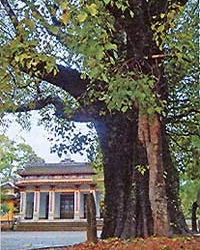The unusual cactus known as the “Creeping Devil” in Mexico not only has the ability to ‘walk’ but also possesses the remarkable capability of infinite replication, enabling it to crawl across deserts and live for up to a hundred years. Its appearance is reminiscent of caterpillars.
This cactus is also referred to as the caterpillar cactus, or by another name, the devil cactus. It received these names due to its resemblance to caterpillars and its ability to reproduce asexually over time.
The Creeping Devil cactus, scientifically known as Stenocereus eruca, is a distinctive plant native to Baja California Sur in Northwestern Mexico. According to Odditycentral, it is the only cactus in the world capable of movement.

Creeping Devil Cactus.
Unlike other cacti around the world, which typically grow vertically, the Creeping Devil grows horizontally and lies flat on the ground. This unique growth form plays a crucial role in allowing the Creeping Devil to avoid isolation and to move freely across the desert in search of water sources.
So, where does the Creeping Devil’s ability to move come from? It is due to its ability to clone and self-replicate.

The only cactus in the world that can move.
As it grows parallel to the ground, the Creeping Devil’s body begins to root itself at its head. Once it is securely anchored in the sandy soil, the old part of the body dies, decays, and eventually becomes a nutrient source for the new part of the plant. Each time this process occurs, the cactus can gradually move across the desert. In other words, the Creeping Devil must die to continue its existence.
Under normal climate conditions, this cactus can grow an additional 0.6 cm each year. If its spiny body clusters together, it can create an impassable area. In dry and hot climates, its growth rate slows down to just 0.6 cm every 10 years. A Creeping Devil cactus, if undisturbed by external factors, can live up to 100 years.
Despite its unique survival mechanism, the Creeping Devil is facing the threat of extinction. Due to its rarity, the Creeping Devil is being illegally harvested.

Creeping Devil is facing extinction.
Alfredo Beltrán Morales, a researcher at the University of Baja California Sur, revealed that a single Creeping Devil cactus can fetch between $4,000 to $5,000 in the black market.
However, illegal trafficking is just one of the threats that this cactus faces. As the Creeping Devil grows on the ground, it can significantly impact livestock grazing and obstruct movement routes. For this reason, many farmers have destroyed patches of Creeping Devil cacti to clear land for cultivation.
Currently, the Creeping Devil is listed among the endangered plant species in Mexico.





















































